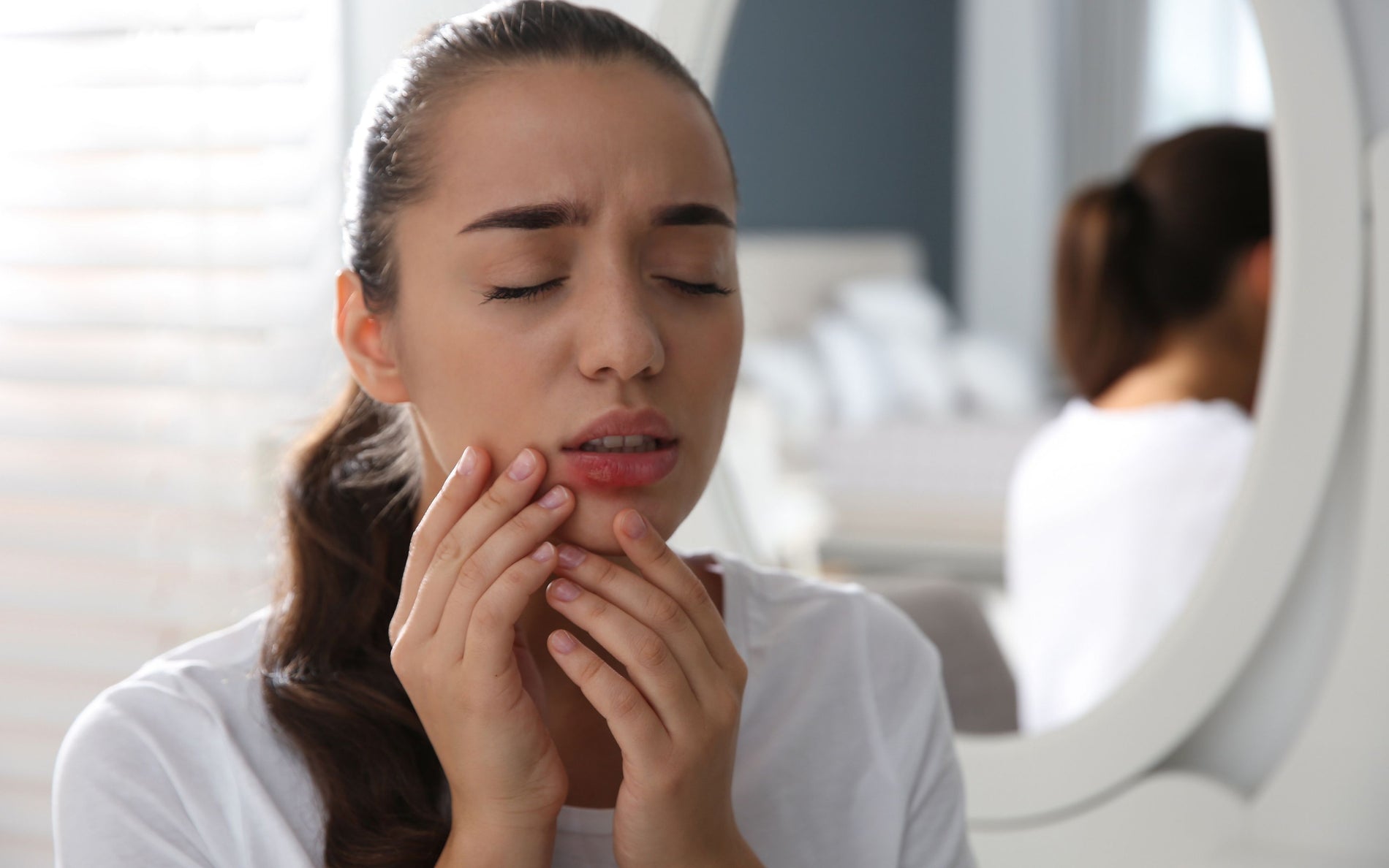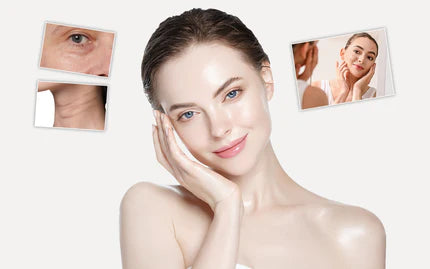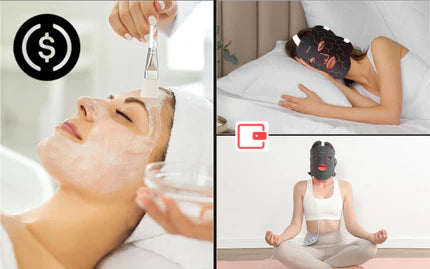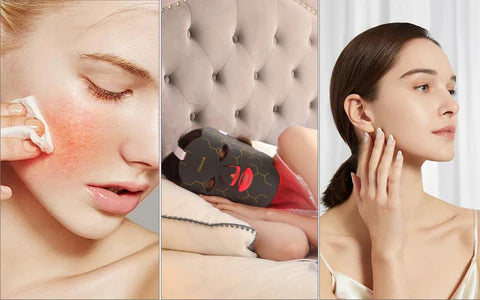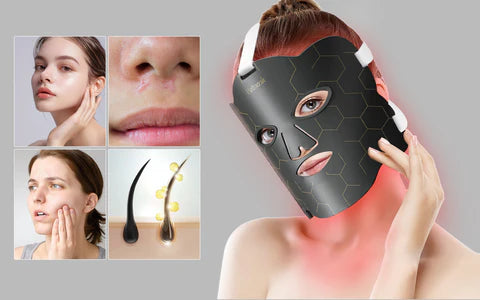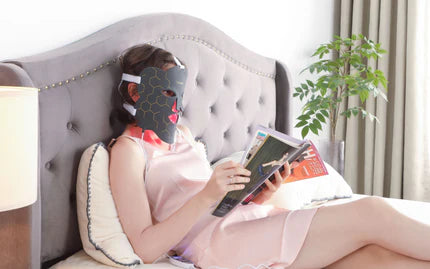Shingles, also known as herpes zoster, afflicts many with its tell-tale painful rash, tingling, and blisters—an unwelcome encore for the chickenpox virus that lies dormant in countless adults worldwide. Amidst the traditional routes of antivirals and pain management, a new contender has emerged: red light therapy (RLT). This novel approach, harnessing the power of specific light wavelengths, is gaining traction as not only a potential panacea for troublesome skin but also as a beacon of hope for those battling shingles-related discomfort. This article delves into the transformative promise of RLT masks, exploring their scientific backing, practical usage, and the anticipated benefits they hold for enhancing skin health and providing much-needed relief from the pains of shingles.

What Should You Know About Shingles and Its Effects?
Shingles: Causes and Symptoms
Shingles occur when the varicella-zoster virus, which is responsible for chickenpox, reactivates in your body. This can happen years after you’ve recovered from chickenpox. The main sign of shingles is a painful rash with blisters, usually on one side of the body. Other symptoms include tingling, itching, and sometimes flu-like symptoms without a fever.
Standard Treatments for Shingles
Doctors typically prescribe antiviral medication to help fight the shingles virus. These medications are most effective when taken soon after symptoms begin. For pain relief, options range from over-the-counter painkillers to prescription medications, depending on the severity of the pain. Some treatments also involve creams or ointments to soothe the rash.
However, these common treatments don’t always work for everyone and can have side effects like nausea and headaches. Pain management can be challenging, as it’s important to find the right level of medication to reduce pain without causing undesirable side effects. This is why some people look for additional treatments to help manage their symptoms.
How Do Red Light Therapy Masks Work to Treat Shingles?
Investigating the Evidence
Research into red light therapy (RLT) and its effects on skin conditions has been building over the years. Various studies have indicated that RLT may improve skin texture, reduce signs of aging, and speed the healing of wounds by stimulating collagen production. When it comes to shingles specifically, while research is less extensive, some findings suggest that RLT can help alleviate pain and decrease the duration of outbreaks by enhancing cell function and reducing inflammation.
Targeted Research on Shingles
Although the pool of studies focusing solely on RLT for shingles is still growing, there are promising indications. A few small-scale studies have reported that individuals with shingles experienced less pain and faster healing times when treated with RLT compared to those who did not receive the treatment. These results warrant further investigation with larger patient groups to confirm the effectiveness and optimize treatment protocols.
Impact at the Cellular Level
Red light therapy masks are thought to promote healing by affecting cells at the molecular level. One of the key actions is the increase in adenosine triphosphate (ATP) production—the energy currency of the cell. More ATP means more energy for cells, which they can use to repair and rejuvenate themselves more effectively. This cellular boost is particularly important in areas affected by shingles, as the virus can leave cells damaged and inflamed.
The Dual Benefits of RLT Masks: Tissue Repair and Pain Relief
Beyond increasing ATP, RLT masks seem to have a dual benefit in the context of shingles. They aid in accelerating tissue repair, helping the skin recover from the blistering rash more swiftly. Additionally, they play a role in pain relief. By reducing inflammation, which is often a source of significant discomfort in shingles patients, the therapy can contribute to a reduction in the overall pain experience. Although individual results can vary, the non-invasive nature and minimal side effects of RLT make it an appealing option to consider as part of a comprehensive shingles treatment plan.

Choosing the Right Red Light Therapy Mask: Key Features to Consider
When you’re in the market for a red light mask, there are several important features to keep in mind:
Wavelengths and Intensity
The effectiveness of RLT largely depends on using the right wavelengths. Most masks should offer a range that falls within 400-850 nanometers, as this is where the therapeutic benefits are strongest. The intensity of the light also plays a crucial role—it needs to be powerful enough to penetrate the skin but not so strong that it causes damage or discomfort.
Comfort, Fit, and Ease of Use
An RLT mask should fit comfortably on your face without slipping or pinching. Adjustable straps and contours that match the shape of your face can make treatments more pleasant. Also, consider how easy the mask is to use—simple operation can make a big difference in your overall experience.
Innovations in Mask Design
Manufacturers are constantly improving the design of RLT masks. Many now are lightweight, with ergonomic designs that mold to different face shapes. These improvements can make the masks more comfortable and ensure that the light is distributed evenly across your skin.
Practical Guide: How to Use Red Light Therapy Masks for Shingles
Preparing Your Skin
Before you use a red light therapy mask, you’ll want to make sure your skin is clean and dry. This helps the light penetrate more effectively. Remove any makeup, creams, or lotions that could reflect or block the light.
Duration and Frequency of Sessions
Stick to the recommended duration for each session as specified by the mask manufacturer—usually, this is somewhere between 10 to 20 minutes. As for frequency, most guidelines suggest daily sessions to start with, which can be adjusted based on how your skin responds and under the guidance of a healthcare provider.
Monitoring Progress and Adjusting Treatment
Keep track of your symptoms before and after each session to monitor how well the treatment is working. Take note of any changes in pain levels, rash appearance, and overall skin condition. If you’re not seeing improvement, or if symptoms get worse, it’s essential to consult with a medical professional. They might adjust your treatment plan, including the duration and frequency of RLT sessions.
Working with Healthcare Providers
Always talk to your doctor before starting any new treatment. They can advise whether RLT is suitable for your specific case of shingles and help ensure it won’t interfere with other medications or conditions.
Complementing Conventional Treatments
RLT masks can be used alongside conventional shingles treatments like antiviral meds and pain relievers. It’s meant to complement, not replace, these treatments. Discuss how to best integrate RLT into your existing regimen with your healthcare provider.
Final Thoughts
Red light therapy, or RLT, is becoming a popular way to help people who suffer from shingles—a painful skin condition caused by the same virus as chickenpox. Using an RLT mask involves cleaning your skin first, wearing the mask for about 10-20 minutes daily, and keeping track of any improvements in your skin or reduction in pain. It’s not meant to replace your regular shingles treatments, but to add to them. And remember, always check with your doctor before trying new treatments to make sure they’re right for you, especially if you’re on medication that makes your skin more sensitive to light. With the right approach, red light therapy masks could be a helpful extra step in managing shingles symptoms.
